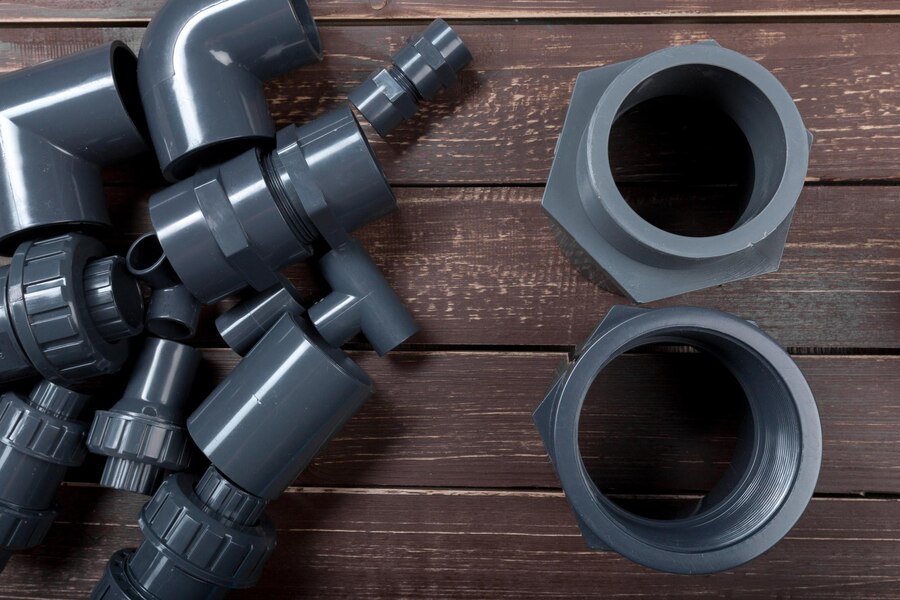


Conduit fittings are the most important parts that ensure safety, organization, and efficiency in electrical installations. Being an expert electrician or doing it yourself (DIY) at home may be very critical, for knowing what conduit fittings are makes or breaks the success of your project. In this blog post, we will learn about various types of conduit fittings, their applications, and the precautions for handling these conduits.
Conduit fittings are hardware used to connect conduit lengths, carrying electrical wires and cables. They are designed to shield against injury from physical shock or damage through environmental action, ensuring electrical installations are safe and per regulation. These conduit fittings can also be applied for direction changes, transitions, and attachments to junction boxes or electric panels.
Conduit fittings come in different types and for other purposes. Some of the most common ones include:
Connectors are used to connect two sections of conduit. It is constructed to make a robust and stable connection with minimal movement or disconnection in time. Common types of connectors include:
The elbows change direction for conduit runs. They come in several angles. There exists the elbow with an angle of 90 degrees and the elbow with an angle of 45 degrees. Proper angle identification may be necessary to ensure that the electric wire flow is kept intact without damage during installation.
Couplings are used to connect two ends of the conduit end-to-end. This allows extended runs without requiring additional fittings to smoothly transition between two sections. Couplings may be either threaded or non-threaded and could be conduit-dependent.
When used to protect a wire and enter or leave a conduit, bushings are small fittings that prevent abrasion and damage to the wires’ insulation. This usually becomes necessary when dealing with a conduit opening that has rough or sharp edges.
Several aspects influence the selection of conduit fittings, including the type of conduit utilized, the area of installation, and the requirements of your electrical work. Here are some key considerations:
Rigid metal conduit, intermediate metal conduit, electrical metallic tubing, and PVC are the four types of conduit. All have their respective kind of fitting that they can use. Always match the type of conduit being worked with the fitting used.
Consider the environment where the conduit will be installed. In cases where installation is outdoors or in damp locations, fitting is to be selected with a watertight seal at all points. Other environments also require corrosion-resistant fittings, especially those exposed to harsh chemicals or severe climatic conditions.
You must abide by the local and national building codes of the country where you plan to install, even if it is the United States. In this case, the National Electrical Code is the law. So, you must choose conduit fittings that will abide by safety standards and comply with the power requirements of your installations.
Accurate installation of conduit fittings gives you a safe and efficient electrical fittings system. Here are some of the tips which you should know:
Installations and torque values for set-screw and compression fittings are given on manufacturer guidelines. Recommended tools and techniques may also be available for assembly.
The installation can go much more efficiently and faster with the proper tools. Some of the most popular ones are used with conduit fittings:
The fitting types and conduit types should be compatible with one another. Mixing different fittings types will lead to weak connections and potential failures over time.
Once you have finished an electrical project, you must schedule periodic inspections of your conduit system for signs of wear, corrosion, or problems with fittings. It would be an early diagnosis that could avert more significant issues in the future.
Conduit fittings are essential to any electrical project because they assure safety, organization, and functionality. Understanding how types of fitting differ, and their applications and proper selection and installation, can easily make or break the success of your electrical installations. This is an essential guide towards confidently leading you through conduit fittings to configure your electrical systems to be safe and compliant for years to come. Whether it is a professional electrician or a hobby DIYer, one who masters the technique of conduit fittings certainly increases expertise and enhances project success.










© 2025 Fran-Co Electrical Supply Inc. All Rights Reserved.
Crafted with Love: DigiCorns